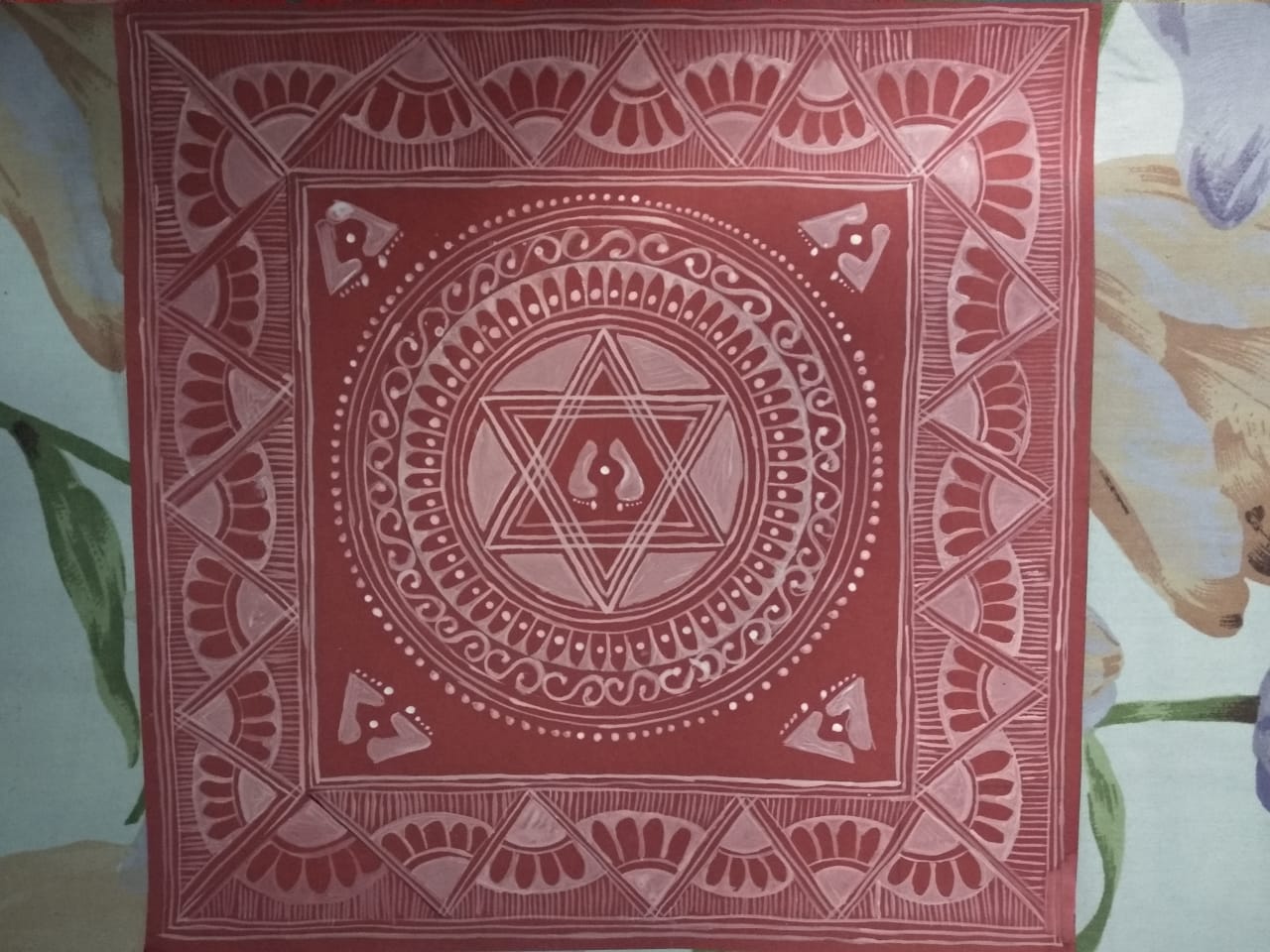Aipan
A folk art native to Kumaon in Uttarakhand, Aipan is drawn to mark the beginning of festivals, special occasions, and rituals (like birth, marriage and death). This practice originated in Almora and spread to many parts of the state, including its popular growth during the reign of Chand dynasty in Kumaon. Historically, it has been located on entrances, floors, and walls of houses. However, today it is also found adorning several objects like books and saris.
The art form is mainly practiced by women, using the fore, ring and middle finger. At the centre of an Aipan lies a dot, symbolising the centre of the universe. The remaining elements of the art emerge from the dot, highlighting the shifting form of the world. The colours used are red and white. The red colour is derived from using wet ochre mud or geru. The paste made of grounded rice cooked in water, bisvar, provides the white colour. A tradition that is passed through generations, the motifs are inspired by the community's beliefs and the natural environment around them. They include a plethora of patterns like flowers, the swastika, footsteps of the goddess, and geometric designs.
This Aipan art was made by the contributor in July, 2020.
Contributed By :
Aashita Pant
